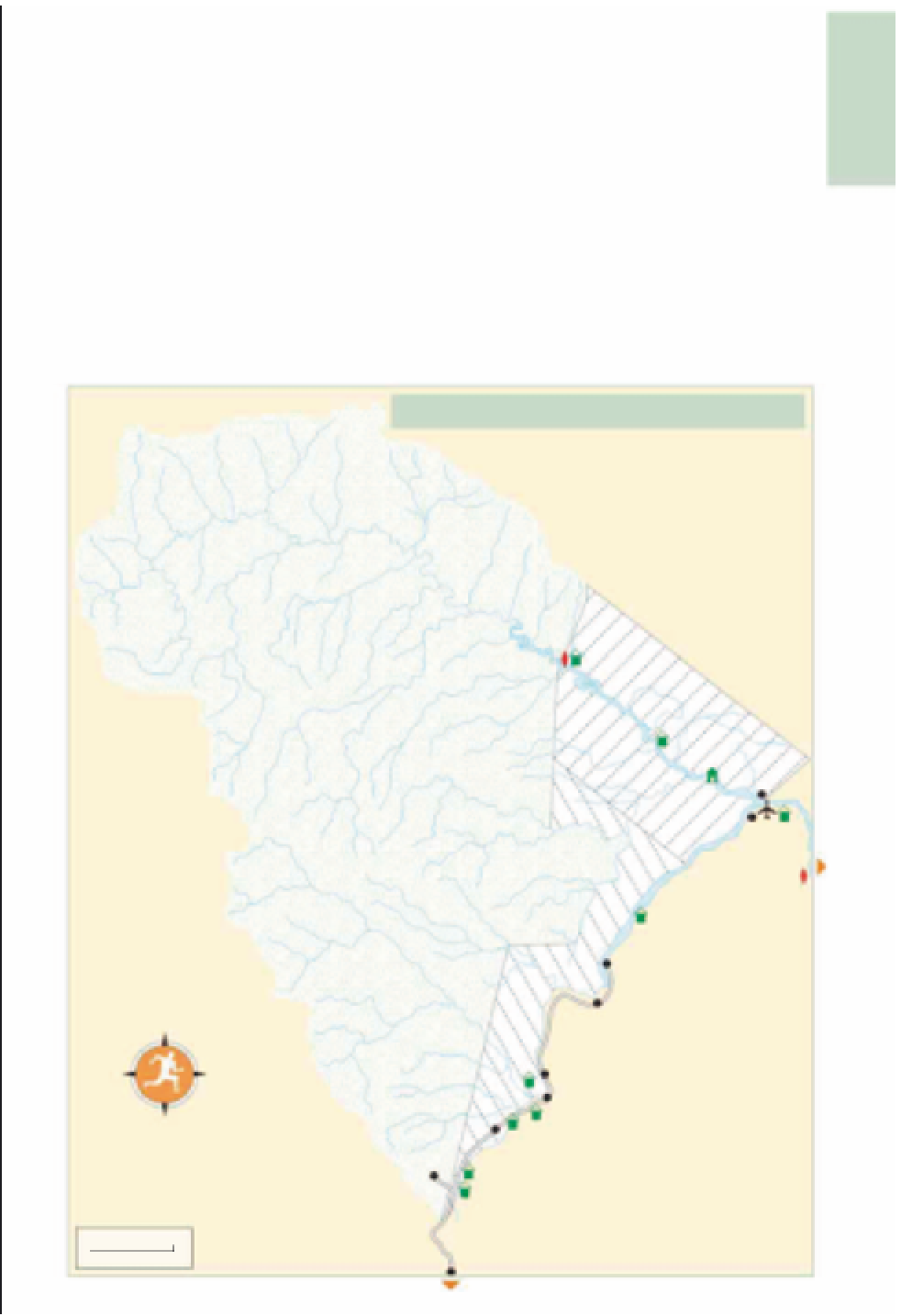Travel Reference
In-Depth Information
9
oxbows) and
Cocha Otorongo
- bountiful
jungle areas rich in animal, water and
birdlife, both located along Río Manu.
Cocha Otorongo is best known for the
family of
giant otters
that live here.
Other wildlife includes the plentiful
caimans
- the white alligators and rarer
black ones - and you can usually see
several species of
monkey
(dusky titis,
woolly monkeys, red howlers, brown
capuchins and the larger spider
monkeys). Sometimes big mammals
such as
capybara
or
white-lipped
peccaries
also lurk in the undergrowth,
and the fortunate have been known to
see a jaguar. Also along Río Manu you'll
find the Manu Wildlife Centre, located
near a clay lick popular with tapirs,
while further along the river to the east,
a short boat ride and hike away, is a large
clay lick, frequented by colourful flocks
of macaws.
he
flora
of Manu is as outstanding
as its wildlife. Huge cedar trees can be
seen along the trails, covered in hand-
like vines climbing up their vast trunks,
as well as the giant Catahua trees,
traditionally the preferred choice for
making dugout canoes, and the “erotic
palm” with its suggestive-looking roots.
MANU BIOSPHERE RESERVE
Casa Machiguenga
National
Park Control
ZONE B -
MANU RESERVED ZONE
ZONE A -
MANU NATIONAL PARK
(RESTRICTED ZONE)
Limonal
Ranger
Station
Manu Lodge
R
Boca Manu
Diamante
Yine
Lodge
Manu
Wildlife
Centre
Pantiacolla Lodge
Itahuania
ZONE C -
CULTURAL
ZONE
Shintuya
N
Amazonia
Lodge
Salvación
Atalaya
Posada San Pedro
Cock of The
Rock Lodge
Pilcopata
Tres Cruces
Manu Cloud Forest Lodge
Manu Paradise Lodge
0
15
kilometres
Paucartambo
Cusco




































Search WWH ::

Custom Search